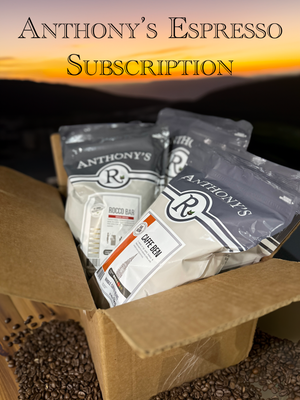
Mastering Espresso Grinder Settings for Various Grinder Types and Manual Espresso Machines
Introduction
One of the most crucial factors in achieving a perfect shot of espresso is the grind size and consistency of your coffee grounds. While having a high-quality manual espresso machine is essential, without the right grind, your efforts might go in vain. In this blog post, we'll delve into the art of mastering espresso grinder settings, focusing on different types of grinders and how to use them effectively with manual espresso machines.
Understanding the Importance of Grinder Settings
Before we jump into the specifics, let's understand why grinder settings matter. The grind size directly influences the extraction process. If the grind is too fine, the water will struggle to pass through, resulting in over-extraction and a bitter taste. On the other hand, if the grind is too coarse, the water will flow too quickly, leading to under-extraction and a sour taste. Achieving the perfect balance ensures you get the full range of flavors and aromas from your coffee grounds.
Types of Espresso Grinders
-
Burr Grinders: These are the preferred choice for espresso aficionados due to their ability to provide consistent grind sizes. They come in two main types: conical and flat burrs. Conical burrs tend to produce a slightly more uneven grind, while flat burrs offer greater consistency.
-
Blade Grinders: These are less suitable for espresso, as they produce an inconsistent grind that can result in uneven extraction. However, if you have a blade grinder, you can still experiment with different techniques to achieve a better grind consistency.
Step-by-Step Guide to Mastering Grinder Settings
Note: Before adjusting your grinder settings, it's recommended to purge any old coffee grounds from the grinder to prevent contamination.
1. Calibrate Your Grinder
If you're using a burr grinder, start by calibrating it to the desired grind size. Turn the adjustment dial to the middle setting and gradually make adjustments while the grinder is running. Stop when you reach the desired size, keeping in mind that different beans might require different settings.
2. Understand Your Beans
Different coffee beans have different densities, moisture levels, and roast profiles. All of these factors impact the way beans grind. Experiment with different settings for each type of bean you use to find the optimal grind size.
3. Grind and Test
Grind a small amount of coffee and test it in your manual espresso machine. Pay attention to the extraction time, volume, and taste. If the extraction is too fast, try making the grind finer. If it's too slow, make it coarser.
4. Time Your Shots
To ensure consistency, use a timer to monitor how long it takes for the espresso to start flowing after you initiate the shot. Aim for a 25 to 30-second extraction time. Adjust the grind size accordingly if your shots consistently fall outside this range.
5. Dialing In Your Espresso
Dialing in refers to the process of fine-tuning your grinder settings for a particular coffee bean. Make small adjustments and keep tasting until you achieve the desired flavors. Remember that even a slight tweak can lead to significant changes in taste.
6. Keep Records
Maintain a log of your grind settings, bean types, and extraction results. This will serve as a handy reference point, especially when you switch between different beans or if you encounter beans with similar characteristics in the future.
Conclusion
Mastering espresso grinder settings is an essential skill for any manual espresso enthusiast. Understanding your grinder, experimenting with different settings, and keeping track of your results will lead you to the perfect espresso shot tailored to your taste preferences. Remember, practice makes perfect, so don't be afraid to tweak and adjust until you find your ideal grind size for each bean type.

 De'Longhi
De'Longhi
 Philips
Philips
 Smeg
Smeg
 Breville
Breville
 Gaggia
Gaggia
 Miele
Miele
 Jura
Jura
 Bezzera
Bezzera
 Rocket
Rocket
 Quick Mill
Quick Mill
 KitchenAid
KitchenAid
 Shop All Brands
Shop All Brands










 Service your Machine
Service your Machine
 Barista Training
Barista Training
 Events
Events
Leave a comment